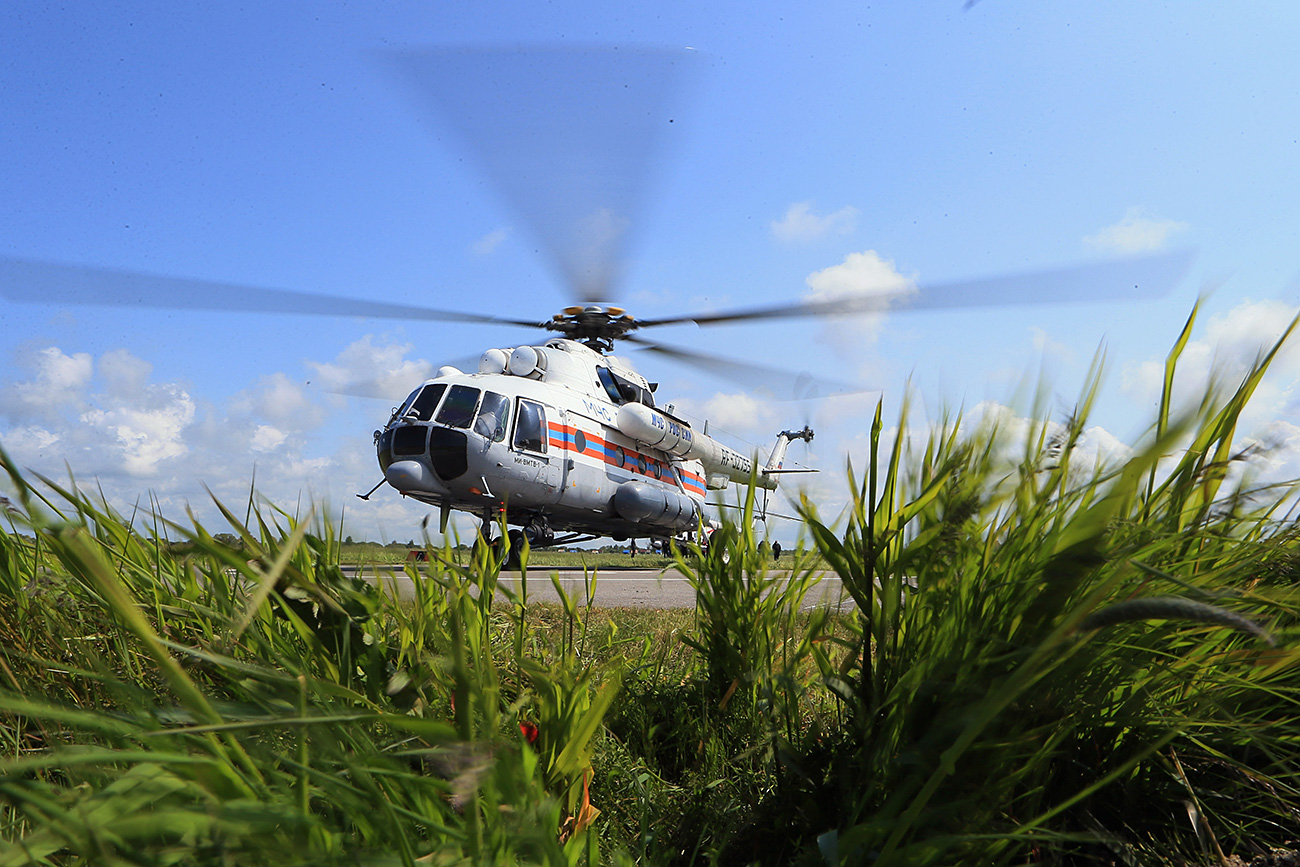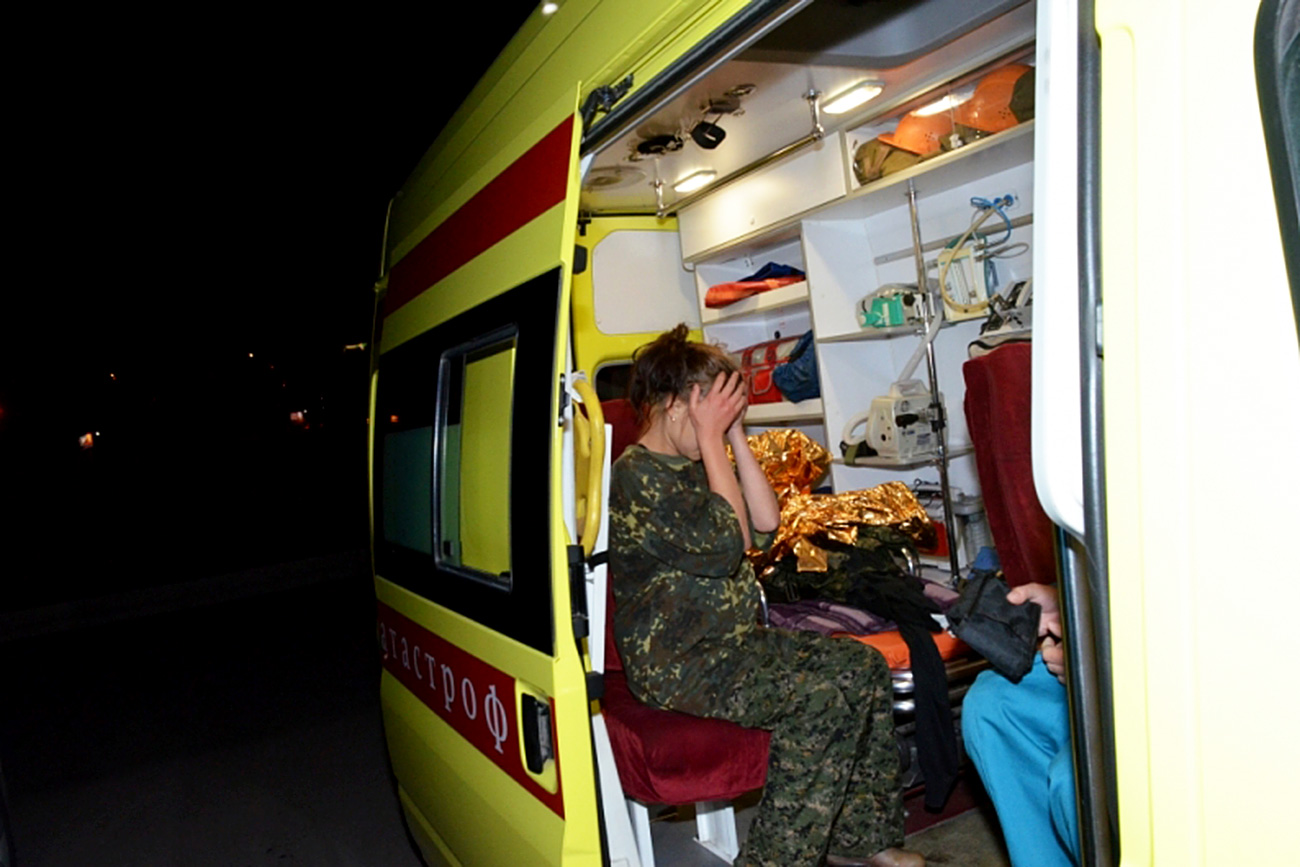The real 'Revenant': How a 14-year old girl survived a week in the taiga

Official: "Locals call this area ‘Bear Land’. Rescue teams were made up of volunteers, plus an armed policeman to avoid attacks by wild animals."
Igor Zarembo/RIA NovostiThe search groups looking for Yana Tomachyeva, the teenager who lost her bearings in the dense Siberian forest southwest of the Krasnoyarsk Region (4,000 km from Moscow) on July 24 while walking with her mum and sister, were seriously hindered by the impassable terrain.
Not even special vehicles with caterpillar tracks could traverse the hostile landscape, full of swamps and thick vegetation. Instead, helicopters dropped rescue groups in different spots throughout the forest as Yana’s friends and family became increasingly concerned for her safety.
Bear Land
“Locals call this area ‘Bear Land’,” Vladimir Yurchenko, the local police force’s head of press, told RBTH. “Rescue teams were made up of volunteers, plus an armed policeman to avoid attacks by wild animals.”
The 14-year-old girl, however, was lucky. She didn’t bump into any hungry bears - despite one of the search groups reportedly sighting a mother and her cub.
A fir bed, dew drops, and berries
On a number of occasions, rescuers came across locations where the teenager had chosen to spend the night. She used fir branches to make an improvised bed, which may have saved her life, given temperatures plummet in the area during nightfall. The thick evergreen would have also sheltered here from the rain.
 On a number of occasions, rescuers came across locations where the teenager had chosen to spend the night. Source: Ministry of Emergencies of Krasnoyarsk Territory www.mchs.gov.ru
On a number of occasions, rescuers came across locations where the teenager had chosen to spend the night. Source: Ministry of Emergencies of Krasnoyarsk Territory www.mchs.gov.ru
“We’ve had rain. It’s summer in Siberia, but in the taiga the temperature goes from 20 degrees Celsius during the day to as low as six or seven during the night,” said Yurchenko.
Yana managed to survive on berries that grow abundantly in the forest. She also found water in small creeks and drank dew that had settled on grass. This spartan ration was just enough to keep her going, but she was becoming weaker and weaker by the hour. Luckily, a rescue group spotted her before it was too late.
 Yana managed to survive on berries that grow abundantly in the forest. She also found water in small creeks and drank dew that had settled on grass. Source: Ministry of Emergencies of Krasnoyarsk Territory www.mchs.gov.ru
Yana managed to survive on berries that grow abundantly in the forest. She also found water in small creeks and drank dew that had settled on grass. Source: Ministry of Emergencies of Krasnoyarsk Territory www.mchs.gov.ru
“We talked with the girl today and she says she did not hear the helicopters. But we have to take into account she was exhausted after spending days in the forest, eating only berries,” Yurchenko added.
Although bone-tired, the girl looked in relatively good shape when she was eventually found. A chopper sent a down a cable and hoisted her to safety using a stretcher. Yana’s courage and the perseverance of her rescuers no doubt saved her life.
Read more:
Russia’s Wild East: Can you guess how this territory was conquered?>>>
The Russian wild: 5 dangers to watch out for in the summer>>>
A love story that will make you drop everything and downshift to Siberia>>>
Wild horses and hungry fire: following an expedition to Southern Siberia>>>
If using any of Russia Beyond's content, partly or in full, always provide an active hyperlink to the original material.
Subscribe
to our newsletter!
Get the week's best stories straight to your inbox